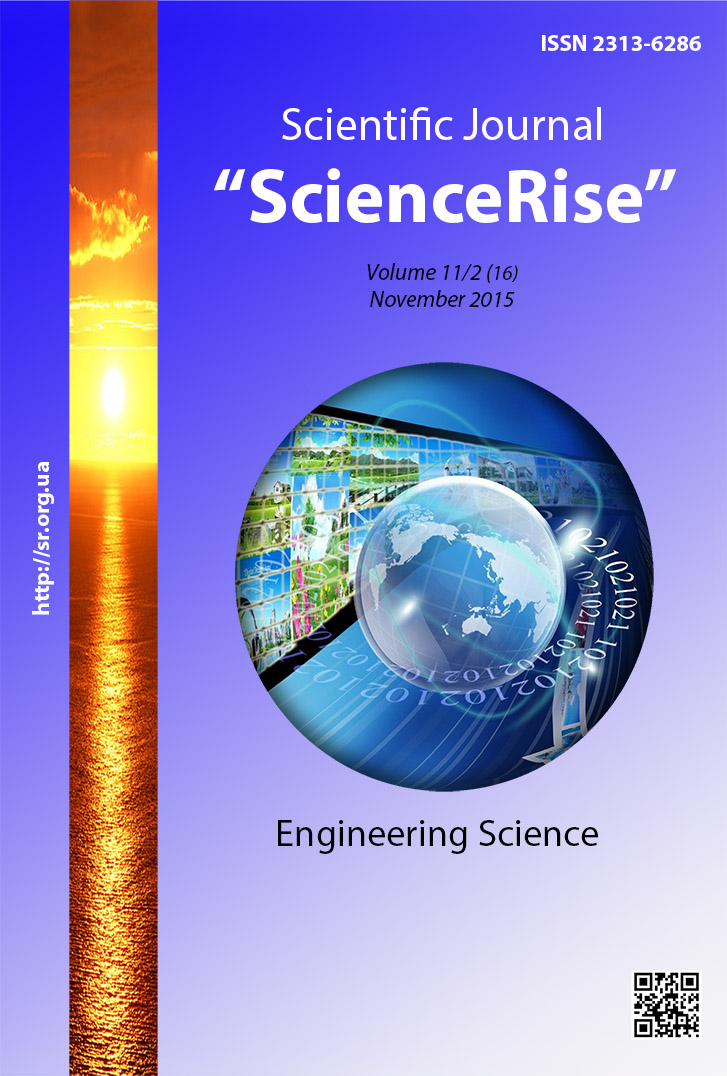Synthesis and research of derived oxazol-5-ones based on α,β – unsaturated ketones
DOI:
https://doi.org/10.15587/2313-8416.2015.53465Keywords:
oxazol-5-one, α, β-unsaturated ketones, luminescent dyes, diamines, proof structure, NMR spectroscopy, IR spectroscopyAbstract
The article deals with the production of new fluorescent dyes derived oxazol-5-ones based on α, β-unsaturated ketones, as well as confirmation of the structure of the compounds obtained using NMR and IR spectroscopy. The dyes of this series are relevant because one of the important practical problems in organic chemistry and chemical technology is currently seeking new fluorescent dyes for dyeing polyester materials and polymers
References
Krasovitsky, B. M., Lisova, I. V., Bogdanova, L. I. (1995). Research 1,3,3-trimethyl indoline derivatives oxazol-5-one. Ukr. chemical. Zh., 61 (7), 102–104.
Krasovitsky, B. M., Afanasiadi, L. M., Lisova, I. V., Stryukov, M. B., Lyubarskaya, A. E. (1982). Spectral-luminescent properties and electronic structure of some substituted azlactone and azlaktamov. Zh. chemistry, 61 (10), 2481–2485.
Krasovitsky, B. M., Bolotin, B. M. (1984). Organic luminophores. Moscow: Chemistry, 336.
Krasovitsky, B. M., Afanasiadi, L. M. (1997). Preparative Chemistry Organic luminophores. Kharkiv: Folio, 205.
Desenka, C. M., Orlov, V. D., Gaponik, P. N., Loaf, V. P. (1990). Azageterocikly na osnove aromaticheskih nepredel'nyh ketonov. Himija acherocikl. coed., 11, 1533.
Dormidontov, Y. P. (2001). By UV, IR and NMR spectroscopy and its application in organic chemistry. Perm: PSU Department of Chemistry, 79.
Downloads
Published
Issue
Section
License
Copyright (c) 2015 Сергей Александрович Петров

This work is licensed under a Creative Commons Attribution 4.0 International License.
Our journal abides by the Creative Commons CC BY copyright rights and permissions for open access journals.
Authors, who are published in this journal, agree to the following conditions:
1. The authors reserve the right to authorship of the work and pass the first publication right of this work to the journal under the terms of a Creative Commons CC BY, which allows others to freely distribute the published research with the obligatory reference to the authors of the original work and the first publication of the work in this journal.
2. The authors have the right to conclude separate supplement agreements that relate to non-exclusive work distribution in the form in which it has been published by the journal (for example, to upload the work to the online storage of the journal or publish it as part of a monograph), provided that the reference to the first publication of the work in this journal is included.

